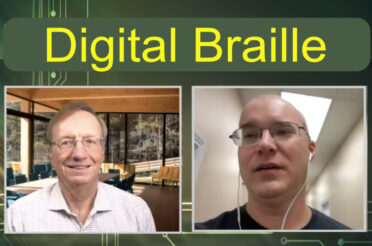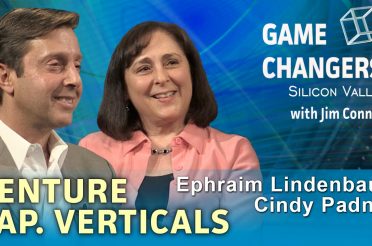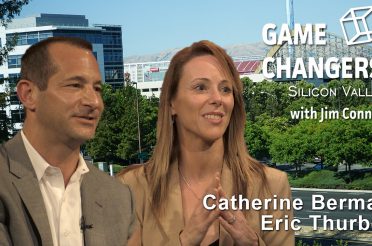Overview
The old way of providing practice in medical procedures with mannequins is being challenged by the immersive qualities of virtual reality. And the pandemic has been one of the factors driving the acceptance of a virtual reality approach. But there are other compelling factors, including the visual effect of working with your team, speaking with the patient, diagnosing the condition of the patient, and observing the effect of medical procedures.
With the introduction of lower-cost, feature-rich headsets, students connect remotely, engage in the training, and then enter play-back to review the diagnoses and procedures applied to a patient.
This SimX VR application has a module, specific for training military personnel in the field where treatment is being provided in a hostile environment. Operating from a single electrical plug and a wireless router, you get a portable medical training system as a response to natural catastrophes such as earthquakes, floods, and fires.
Some of the topics addressed are:
- How is VR being used to simulate medical training?
- What resistance did you encounter in the VR Adoption?
- Can a patient die during a VR simulation?
- The role of SimX during the Covid pandemic
- What is the future for more VR capabilities in simulation training?
Timestamps for this interview are as follows:
- 01:05 How is VR being used to simulate medical training?
- 02:05 Example of using simulation to practice medical procedures
- 02:54 Who is using VR for medical training?
- 04:30 Nurse training programs using simulation
- 07:30 Remote VR training
- 08:20 Building and tracking a VR based treatment scenario
- 10:16 Why did you develop this VR application?
- 13:10 Building a VR startup
- 14:35 What resistance did you encounter in the VR Adoption?
- 17:12 Can a patient die during a VR simulation?
- 18:45 Military context for VR simulation
- 21:36 Bootstrapping the company?
- 23:15 The role of SimX during the Covid pandemic
- 25:15 What is the future for more VR capabilities in simulation training?
- This podcast will discuss how the following parties have a role in creating a startup ecosystem:
Transcript
Jim: Among the universal disruptions caused by the pandemic, postgraduate education and healthcare have been particularly hard hit; just when we needed more nurses and doctors, restrictions on in-person clinical training have eliminated the source of new healthcare workers. My name is Jim Connor; welcome to the Game Changers Silicon Valley podcast.
Today’s conversation is about how a medical student became convinced about using virtual reality to deliver highly effective medical treatment. My guest on this topic is Ryan Rivera, the founder, and CEO of SimX, a company that has developed a range of virtual reality training programs for nursing and physicians.
Jim: Well, Ryan, delighted to have you here on the show today. You’ve got a very interesting concept using AR, augmented reality, and VR, virtual reality. You know, for me, historically speaking, I always thought it was all about games; you know, that’s the immersive experience of VR. Still, you’re using it for training medical professionals, and so I’d like to ask you give us and our audience an overview of what are you doing using AR and VR in medical training.
Ryan: Yeah, for sure, so I mean, basically what SimX does is we use VR and AR to make simulation training cheaper and more accessible and realistic. So the idea here is that whether you’re trained to be a doctor or a nurse or an EMT, you’ve got your didactic component of training where you’re just getting lectures you’ve got your skills building where you’re learning how to put in IV’s and use a stethoscope and you’ve got simulation where you’re bringing it all together and kind of simulated patient encounters and those are usually done these days either with standardized patients like actors who come in and pretend to be patients or with robotic mannequins that can kind of mimic some features of humanity and you run simulated cases around them and so the idea here is instead of either of those you put on a headset you’ve got a virtual patient it’s a very hollow deck-esque style experience you can talk to them, you can perform procedures, you can diagnose and treat the medical problems, and the whole idea is to make the care that we provide safer to provide a risk-free environment that providers can practice their skills in so that when they’re actually working with real life patients, the care is going to be higher quality and it’s going to be safer:
VR segment:
VR Segment: All right, so here we are inside the patient’s room, and before I get started and talk to the patient, I’m gonna go through and kind of explore the room, introduce everybody, and the equipment available. We’ve got our patient here I can interact with it, I can talk to her, I’m gonna hold off on that. Here we’ve got oxygen tools. I can pick all this up blood pressure cuff, cardiac monitor; here’s where our cardiac monitor is, thermometer and EMR. This is going to be pretty important because this is how I’m going to learn about my patient. Looks like today Kate Miller is here to see us, and she’s got some heart failure, some hypertension, some asthma.
Jim: Well, that’s pretty fascinating. So I’m just gonna unwrap this a little bit, so the training is provided at hospitals or medical schools, or where does the training take place?
Ryan: Yeah, so we have a variety of customers, and some of them are MD training programs, several of them are nursing institutions, nursing schools, and some of them are even community hospitals because I think community hospitals are increasingly taking up simulation as a way to increase the quality of the care that they’re providing. Traditionally the training has been done on robots, mannequins, and so on.
Jim: What you’ve done is do it with VR now; where does it start? Do you start in the nursing area, do you start in everyday treatment type things? Do you start with sutures? How do you proceed?
Ryan: Yeah well so i mean it’s a combination of i think what people are interested in simulating and used to stimulating now and what kind of the capabilities of virtual reality are so you know one of the big limitations of virtual reality now is the tactile element you don’t get a lot of great tactile feedback um and so training someone to do something like suture it’s it’s really just not that well adapted for something like that right because it really is about how it feels when you’re going through the skin and you know if you’re getting the right amount of tension or not so really where vr shines i think is training people around their diagnostic capabilities and their treatment pathways so it’s not so much you know how to suture it’s if you suture this up and it doesn’t work what do you do next right and and vr is very good at that so that’s where we have focused primarily is in that kind of diagnostic and treatment pathway space and it ended has ended up being nursing predominant in the early stages and that’s not because you know we went into this and said oh we’re going to target nursing from a business model perspective it’s because it turns out nurses just do a lot more simulation than anybody else in part because there’s a lot more nursing training programs in the us than there are MD training programs and also because a lot of the pioneering research around simulation as a training modality was is done by nurses and in nursing training institutions so that’s turned out to be the majority of our early customers
Jim: I’ve been surprised by the training requirement for nursing; it’s pretty extensive for a lot of years and so on like that, so that is now we have a shortage of nurses or at least a projected shortage, is that correct?
Ryan: Yeah, shortages of nurses and then also many types of physicians as well, especially primary care providers, and so this helps get people prepared ready to go, and then they still have to go through other certifications.
Jim: I assume whether it’s a credential testing or something, or is there a peer review, how does that work?
Ryan: Yeah, so the requirements for certification for nursing and physicians are pretty regimented and pretty intense. I think one of our hopes certainly is that a product like this can reduce the load. If you’re starting up a new nursing program or if you’re trying to expand your nursing program, this is a way that you can get simulation a simulation program started in a way that is cheaper and easier and very expandable and so hopefully, that allows more people into the training pipeline.
Jim: Do people enroll and engage in your VR / AR program individually? I mean, do they work as a team? Is this in a classroom? Just tell us a little bit about that.
Ryan: Yeah, so the way that it’s usually utilized is kind of in the same way that mannequin-based sim would be utilized in the past, so well not in the past it’s still being utilized we’re not we haven’t completely replaced it nursing educators or hospital educators um will have kind of designated portions of the curriculum where they’re performing simulation and so very often also with our product they’ll bring groups of students in they’ll all put on headsets very often they’ll send them in two or three at a time into a scenario and with our software they’re able to see each other in VR everything’s lined up in the real world as it is in VR. So if you high five in real life, you’ll high five in VR, and they can work together in the same room around these virtual patients. Then afterward, there’s typically a debrief process where the instructor talks them through what happened, what could we have done differently you know how might things have turned out if we’d done this instead of that sort of thing now uh because of the flexibility of virtual reality there are some additional ways that you can use it for example during the covid pandemic being in person in the same room and doing simulation is not always possible. Some of the institutions have kind of closed down that aspect of their educational programs, and so we do have customers that are lending headsets out to students, and they’re taking them home, and then they’re joining from home and still doing these multiplayer simulations all together team-based training like they would in person, but they can do it from the safety of their own homes.
Jim: That’s remarkable! I didn’t think about that, but the fact that you can actually set this up for remote engagement from home that’s a game-changer all the way.
Ryan: Yeah, it’s huge, and it’s really not just in the covid pandemic, you know there are a lot of nursing institutions, especially where they have kind of a spoken hub model they might have a main campus and four rural campuses and historically, educators would literally throw these like 150-pound mannequins into the back of their cars and drive, you know, two hours to this institution unload the mannequins and do sim there, but here with VR they can just have a few headsets at each outline site the instructors can join from any location, and they can help facilitate simulations remotely.
Jim: You know a range of questions have come up as you’ve said this does your software evaluate, or is it mainly training, and then the school evaluates the student?
Ryan: Yeah, so that’s I think one of the other big benefits of VR is the ability to really track everything that’s happening in this scenario, so typically when we build a scenario, we do it in conjunction with educators at our customer institutions, and they have certain kind of critical actions that need to be performed at each stage, or things that you definitely shouldn’t do and the system is capable of tracking all that and then displaying it back at the end of the scenario. So you can use that to facilitate a debrief, but it can even do a lot more it really tracks everything that happens in that scene. So you know, you can you get a print out of timestamps of everything they did, and you can say, well you know, look you didn’t even put them on the monitor until two minutes and 30 seconds into the scenario, and you know their hearts just racing that whole time. So it really gives you some precision. Something that we’re looking forward to in the future is there headset manufacturers coming out with things that let you track eye position even so you could give feedback to a student and say you know when you were talking to the patient, you were only looking at them you know 30 percent of the time and average for your stage of training is to be looking at the patient 75 of the time when you’re talking to them and so even feedback on some of those psychosocial and soft skills are something that’s probably going to be a lot easier to perform in VR than in traditional sim.
Jim: That’s pretty amazing because I never would have thought that this type of system VR could be used to train those soft consultative skills that doctors are often challenged with or claim to be challenged with by their patients. So that’s pretty remarkable.
Ryan: Yeah, Actually, I think, exceptionally well adapted for that type of training.
Jim: And you’ve done this for a while now it’s been what seven, eight years you’ve been doing this seven years, yeah, and you did this, you and your team developed this before the headsets were even available. So one question I have about that is maybe you talked about your history of why you developed this, how you developed it, how do you develop it when headsets aren’t available, were you just projecting what they’re going to do?
Ryan: Yeah, so those are all excellent questions now, so kind of what led us to this; actually, it grew out of our own experiences as trainees. So I was a medical student at UC Davis, I was in my fourth year, and I was doing a one-month long simulation rotation where I was just doing simulation all day every day, and it was with some standardized patients; it was with some mannequins, and you know anyone who’s gone through that experience knows that the limitations of the mannequins are pretty severe. I mean, they can’t really have traumatic injuries; you just have to kind of pretend if it’s a stroke patient that they have a stroke you know they, of course, can’t be emotive they can’t cry you can’t really have emotions that are there um and I learned during that rotation that those mannequins cost $50,000 to $250,000 each. I was just floored by this right! And I had had a background in health tech I worked for an angel investor for a long time, I’d been a part of several different startups, and I really saw an opportunity here. I was like, “wow, you know, here is something where there’s a huge opportunity to improve the technology that’s being utilized, and it is currently just incredibly expensive”! There’s got to be an opportunity, and I was pretty familiar with what were emerging at that time VR and ar technologies, and this seemed like the perfect fit right because you can have the flexibility of a virtual patient but still have all that kinesthetic learning that ability to walk around the space and use your hands and interact that you get with mannequin based sim. And so we recruited a team and started building. You’re absolutely correct, this was 2013 when we filed our initial IP, and you could not get even a developer kit for any VR headsets at that time. Still, the opportunity seemed like such a perfect fit we wanted to be ready when the hardware was ready. So we started building out the underlying software, I mean, and at its heart, it’s an educational video game. So there’s a lot of thinking that has to be done in how you structure the software end of things really independent of how the headsets work. And then probably, I think it was just about one year into that when we could get developer kits for the first ar headsets um with meta. So we started working with them, and if you look through our youtube and things. You’ll find early appearances of us at Techcrunch and things with meta, and we were using the AR headsets to build it out and then as the hardware has matured. We’ve worked on pretty much every single headset in the AR or VR space that has been released. And then it’s really, I think with the oculus quest and the HTC Focus plus the newest all-in-one headsets that the hardware has finally come to both the usability state and a price point that it’s really starting to take off with our customers.
Jim: that is one incredible leap of faith though to put together recruit people right and tell them; oh yeah, we’re going to uh we’re going to develop this software here to simulate um medical procedures whatever it might be, and no, we don’t have any we’re going to bet that you’re going to put a year or two into this effort, and then we hope the headsets will work as we are projecting and you’re going to build a database and all this. Is that the story you told them, or did you add something?
Ryan: No, that’s that’s pretty much it now. I guess some important context is that I think in the health education space, it’s been recognized for a while that VR was going to be the future of simulation. You can find academic articles written back in the 90s saying this is definitely what we’re going to be shooting for. And so there is some, I think you know, within this industry some evidence for us to rely on that there was going to be acceptance of this technology once it was available. But, yeah, I mean, fortunately, the early team was mostly people that I had worked with on other projects or that I had close relationships with, and so we had a relationship with trust that we could rely on. But it was a leap of faith for sure.
Jim: Are they all still friends?
Ryan: Yes, they are all still friends. Almost all of them are still involved in SimX, actually.
Jim: Good, so this is always going to be a question that all and you’re in a unique space being medical doctor type person now embracing the concept of software and development I mean, you’ve got a huge background, have you encountered resistance to what you’re doing along the way?
Ryan: Yeah, definitely there has been some resistance, and some of it is expected in the healthcare industry; in general, I think we’re a little slower to adopt new technology than in other spaces, and a lot of that is rational, right if you don’t want to be the first one to try a new method of having a ventilation right because if it fails then your patient dies. And so there’s some I think the industry’s a little bit conservative technologically by nature. Now, that’s not quite as much of a problem in the education space because nobody dies if your educational product doesn’t work. But there’s still some of that that leaks over. And then I think, you know, the other thing that’s been a bit of a limitation in the early VR headsets were very expensive; they were pretty cumbersome. They had a lot of challenges; people, in particular, would get very motion sick with them. I myself would get very motion sick with the early VR headsets. And so there’s a lot of people out there now who have said, well, you know, i tried VR once I put my phone into a cardboard box, and I was on a roller coaster, and I threw up 30 seconds in, so VR is not for me, I don’t really like VR. But the newest headsets really eliminate almost all of that, so we were still working through some of those initial impressions people got from early headsets.
Jim: Okay, how did the initial deployment go? Did you find universities or hospitals, and how did you get it out there in the beginning?
Ryan: Yeah, well, so you know we did do some early appearances at some industry conferences. We won best in show at IMSH, which is the biggest conference in simulation pretty early on in this process; and you know, like i said, the medical simulation industry has been looking for VR for a long time. When we appeared on the scene kind of first publicly in about 2014, we got a lot of attention from institutions. You know, frankly, we really didn’t do any advertising and still don’t really do any advertising. We put up a website, put up some videos, and people started reaching out to us. Our earliest customers were 2017, I would say some of our early adopters who are willing to jump into what, at what point, was some still relatively expensive VR technology. And it was nursing schools it was MD schools. And it’s just kind of grown from there.
Jim: You know most of us everyday people we’re only familiar at least in the older generation with one type of uh virtual reality and not even virtual is flight simulator so yeah we’ve all seen that when you’re the pilot, and you’re getting warning warning warning you’re about to crash pull up, and you crash do you have that experience built into your experience, not a crash of course, but a catastrophic effort on the operating table or in the procedure?
Ryan: Yeah, definitely, now I will say there’s a little bit of controversy in the medical education space about the idea of letting a patient die in simulation because you know if you make your stimulation good enough, it can be a pretty traumatic experience for somebody. And if you put a very fresh trainee in and you say you got to do this right and they mess it up, and somebody dies, you know they’re going to be hesitant perhaps to continue on that career path, and so you got to be a bit careful about it. So and we work in conjunction with our educators about how severe they want the consequences to be for mistakes. But we definitely have quite a few cases where patients die. I mean, we work with the US Military a lot, and we’re deployed across a bunch of different bases training special forces medics. All of their cases allow people to die because that’s just you know; unfortunately, the reality of the environment they practice is that many of their patients will not make it through transport. And so that you know just has to be something that they’re familiar with and can work through.
Jim: So what is perhaps the most demanding environment that your software is used in for training?
Ran: Yeah, well, so I would say it has to be that military context, and it’s demanding both in terms of the software requirements but the physical environment in which those simulations are performed. So we have cases that we make for the military where there are eight simultaneous patients. You have teams of four that are, you know, combing through these eight nine different patients, finding the ones that are savable, and working on them simultaneously. Those are obviously very resource-intensive simulations both from a technological resource perspective, and an educational resource perspective makes them work and be realistic. But then the physical environment in which the military performs these sims is really remarkable. Just a couple of weeks ago, we went out to a training where they were using our VR sims essentially in the middle of the woods at about 2:00 am. You know we use these Oculus Quest headsets. These are the new all-in-one new wireless headsets, and so they’re able to do that. But you know it’s 2:00 am in November in the middle of the night out in the woods in a kind of undisclosed military base, and you’ve got a bunch of special forces guys training through simulations. So it holds up actually
Jim: so it must have been wireless transmissions, correct?
Ryan: So we’re able to set up completely wireless setups. You do need at least one power plug one source of power for a router that allows the headsets to communicate with each other, but you the way that we have the software programmed for them, you don’t need a connection to the internet um the headsets don’t need individual power or anything like that.
Jim: That’s remarkable, so this means really we have these catastrophic disasters floods, you know, hurricanes whatever. You could pick your set up and put it on a plane and ship it somewhere with one plug, wireless router headsets, and people up and running on how to handle all these emergency situations, is that correct?
Ryan: Yes, absolutely, and that is that logistical benefit is one of the huge boons I think of VR and simulation I can carry a sim center on my person and these headsets now are very compact like between a backpack and just what I can hold in my hands I can have enough for eight people at least to do you know multiplayer simulations anywhere and that is very remarkable.
Jim: Yeah, I think you’re a candidate for reality TV or reality medical ER, something like that where a team drops into a disaster area puts on the headsets. They show the audience what’s going on, and then they start working on real patients!
Ryan: Yeah, parachute a sim center into there you go a remote location.
Jim: There you go. So I want to ask a couple of things relative to entrepreneurship. How did you fund the company, how did this happen?
Ryan: Yeah, well, so in the early days and just maybe adding on to the kind of in retrospect the remarkable accomplishment of pushing people forward on the promise of future tech it was funded by our own team. So we bootstrapped it for quite a while, actually all the way up until we got about a million dollars in revenue. We had bootstrapped it, and then since that time, we did get a little bit of angel funding, but the revenue has really been picking up, and that’s been primarily what’s driven the company. You know the other source of revenue that we’ve tapped into starting this year is SBIR grants, so you know these are government grants that facilitate public-private partnerships, and because of a relationship now with the Air Force, we’ve been able to apply for and receive some grants that you know help fund development. The SBIR program is fantastic! It really doesn’t put a lot of strings on you. You can take the things you’ve developed under those grants and use them commercially without really any obligation in return. So far, that has all worked out very well for us.
Jim: did you do the SBIR application yourself or hire a consultant? I have to ask you about that.
Ryan: So well, you know, of course, we were not successful in our very first SBIR efforts. We’ve applied for quite a few over the last year, and in the early days, we did it ourselves, and then we started dipping our toes into getting a consultant. Now we’re applying for so many grants on a regular basis that we do have a group that we’ve secured to help us with that process.
Jim: Okay, so I want to ask you about the future. Are you going to be self-sufficient? Well, you are self-sufficient. Sounds like it’s only a matter of time? Are you raising money, or are you going to just do it organically?
Ryan: Yeah, well, so you’re exactly right. We are self-sufficient at this point. We can grow, regardless of any external funding. We expect to be able to do that going forward, which is a really nice place to be in though we are actually just recently uh kind of venturing out to look for some external funding in part because the covid pandemic has just brought such a tremendous demand for virtual learning products that it’s almost a little bit more than we can keep up with. We’d like to be able to hire up a bit more aggressively so that we can support some of these incoming contracts. So yeah, we’re not necessarily closed off to external funding.
Jim: I’ll just mention this; it’s a good point for you, and it’s a positive point that you now have made training on Covid 19 treatment free, is that correct?
Ryan: Yeah, that’s correct. So at the outset of this, we released several coveted training cases for free to any institution that wanted to sign up. We had about 150 institutions sign up for it pretty shortly after and we still get several more a week actually that are requesting it. It trains people on how to triage covet patients how to do the covet swabs. Then there are inpatient scenarios where you learn how to differentiate it from other common respiratory conditions and what the treatment options are. This was something that was developed internally; in most of our cases, we develop alongside our customers, but these are ones that came out of our own medical group. It just so happens that many of the physicians that are involved in SimX come from covet hot zones and work clinically and covet hot zones, and so we felt like it was a good opportunity to take what we had learned in those early months and be able to rapidly deploy it across the country.
Jim: That’s great, that is wonderful! So in a minute, I’m going to ask you for contact information because I’m sure more people will potentially be contacting you as a result of that policy, but I want to ask you first: what’s the future look like in the next 12 to 18 months?
Ryan: Yeah, well, so in 12 to 18 months, I think with the release of some of these new headsets like the oculus quest and now the Oculus Quest 2, you’re going to see a lot more adoption from institutions of VR technology. For us, at least, I think the biggest hold up in the adoption of our product has been a familiarity with VR headsets, and so we expect a lot of growth. VR lies in a few different places, and one of the things where we’re going to see a lot of new growth is in tactile tools and things like gloves and other tools that let you feel virtual content. I think that’s going to really expand the use cases for medical training and VR. Once you get on to the like five-year horizon, I anticipate that the advent of VR and simulation is going to make simulation, in general, a more common training modality, not just in healthcare actually, but in other industries as well. You mentioned the airline industry earlier. I think we’re all aware that the airline industry has a fantastic reputation for safety despite the fact that you’re basically relying on a couple of people to fly very complex machines. You know, and it’s happening thousands and thousands of times a day, and the reason that they’re able to achieve that is simulation because they have very realistic simulators of the inside of cockpits, and they put in thousands of hours of training before they ever get in the pilot seat of a real aircraft. i think that’s where we need to go in medicine is to create a training environment where you have thousands and thousands of reps before you ever step into the operating room and where throughout your career, you know you are able to continually train-up on those things that you’re not seeing regularly in practice so you can make sure your skills are ready. I think every generation of medicine looks back on the one before and says, “Oh, that was so barbaric. How could you have practiced medicine? How could you use leeches or tried to bleed people as a treatment modality”. You have a hard time envisioning what the future is going to be in you that could have been different. But I think what the future will see in us is how could you have practiced on real people, how could you have let you know half-trained physicians and nurses out into the real world and actually do their first sutures on real humans. Because I think with the advent of these simulation technologies, it will just seem senseless.
Jim: That’s an excellent point, very good point. Well, I want to really thank you for your time. You’ve been outstanding; you’ve informed us. I’ve learned quite a bit. I’m sure the people in our audience have learned quite a bit. So let me ask you to give us in the audience a way to follow up with a company or you individually however you want to do that.
Ryan: sure, yeah, and probably the easiest way is to go to SimXvr.com, and you can find a lot of information about the company. You can sign up for free accounts. You can connect up with our sales team or our business strategy team if you want to partner with us, or you should feel free to email me directly that’s ryan.ribiera@simxvr.com.
Jim: All right! Well, Ryan, I want to thank you so much. It’s been a great experience hearing about this, and you’ve really given me something to think about. I will probably be more confident when I go to the hospital in the future, and I’m going to ask them: can’t you just show me what you’re proposing that you want to do? I want to thank you so much for your time, and we’ll look forward to catching up with you in the future and hearing where you are in 12 to 18 months.
Ryan: Yeah, sounds good! Thanks so much for having me.
Contact Info
Ryan Ribeira : ryan.ribeira@simxvr.com
Jim Connor : jconnor@gamechangers.tv
Website Link - : www.SimXvr.com








Leave a Reply
You must be logged in to post a comment.